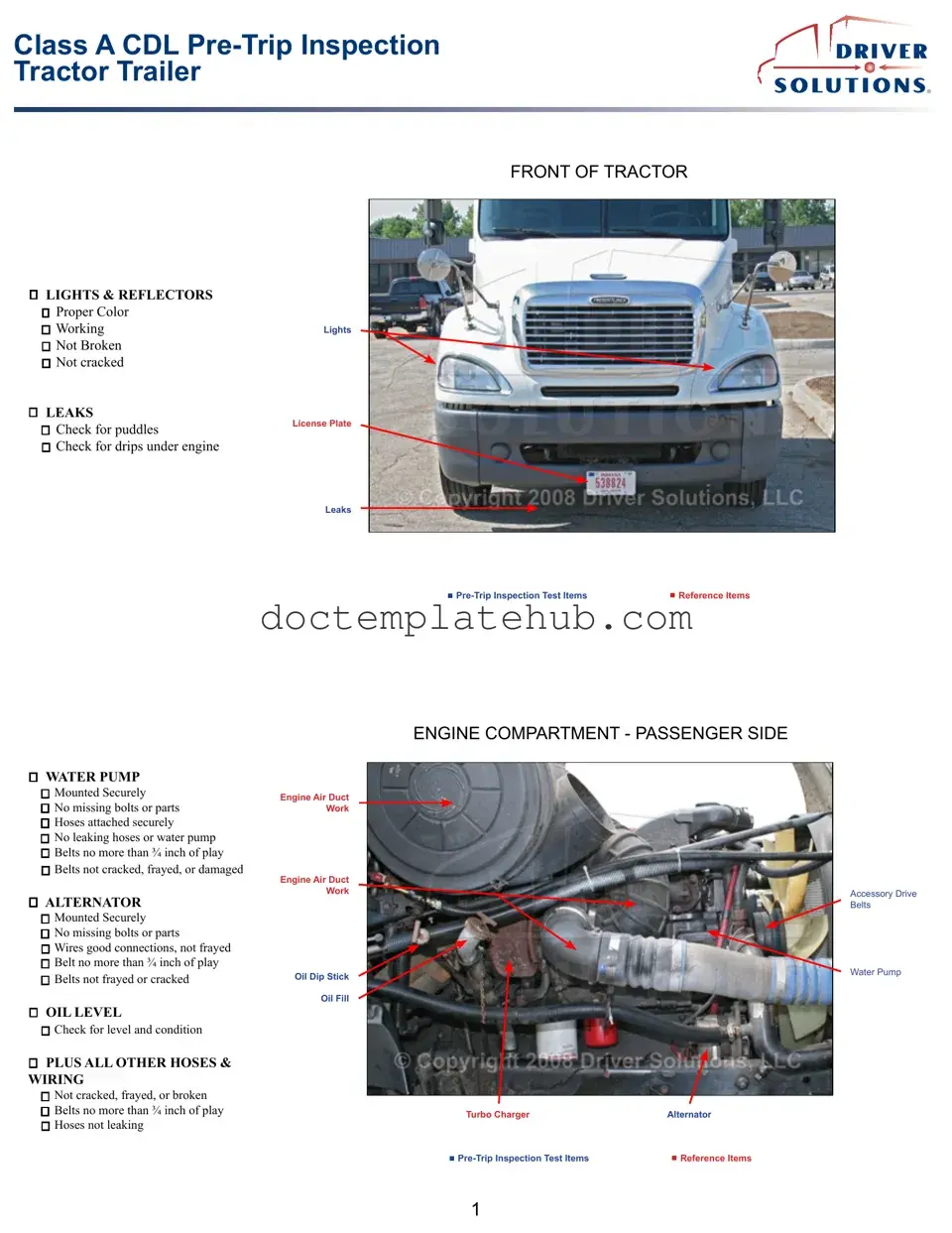What is a Pre Trip Inspection Checklist form?
The Pre Trip Inspection Checklist form is a document used by drivers to systematically inspect their vehicle before beginning a trip. It ensures that all critical components of the vehicle are functioning properly, promoting safety on the road.
Why is the Pre Trip Inspection important?
This inspection is crucial for identifying any potential issues that could lead to accidents or breakdowns. By catching problems early, drivers can prevent costly repairs and enhance their safety as well as that of others on the road.
What items are typically included in the checklist?
The checklist usually covers essential vehicle components such as brakes, lights, tires, fluid levels, and mirrors. Each item is inspected to confirm it meets safety standards and is in good working order.
How often should the Pre Trip Inspection be conducted?
Drivers should conduct a Pre Trip Inspection before every trip. This routine check helps ensure that the vehicle is safe to operate and can significantly reduce the risk of accidents.
Who is responsible for completing the Pre Trip Inspection?
The driver is primarily responsible for completing the inspection. However, fleet operators and companies may also implement policies that require additional oversight or training to ensure compliance.
What should a driver do if they find a problem during the inspection?
If a driver identifies an issue during the inspection, they should not proceed with the trip until the problem is resolved. Reporting the issue to a mechanic or maintenance team is essential to ensure the vehicle is safe to drive.
Is there a specific format for the Pre Trip Inspection Checklist?
While there is no universally mandated format, many companies provide their own templates that meet regulatory requirements. These templates typically include space for the driver’s name, vehicle details, and a checklist of items to inspect.
Can electronic versions of the checklist be used?
Yes, electronic versions of the Pre Trip Inspection Checklist are increasingly common. Many companies utilize mobile apps or software that allow drivers to complete inspections digitally, which can streamline the process and improve record-keeping.
